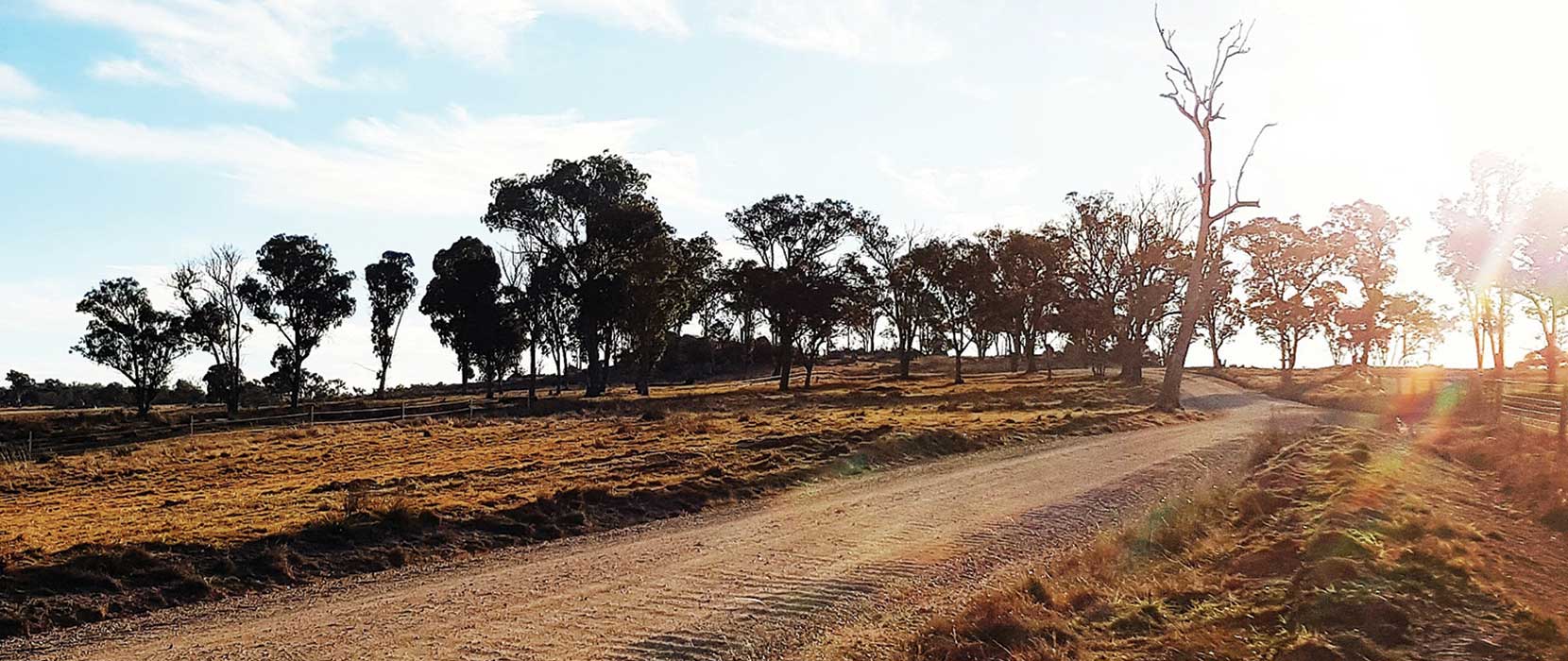Indigenous Research at UNE
‘A ‘typical Australian’ rural childhood — in a landscape defined by fences and gates, where English crops were planted in Indigenous soil, in neat squares, with their authorised boundaries of what was ‘ours’ and what was not — was now revealed to be something very different.’
Dr E.J. Kent
 I grew up in the farming country around Armidale, and every day I saw this big, old, dead tree. It had been dead so long it was just a massive silver trunk and one branch spiralling up. I saw the tree when we went to catch the school bus, when we went to town or came back again, when we went to visit the neighbours. That tree was just always there. Eventually I left the farm to live in the wider world. But then I came home again and, while we no longer owned that farm, I now drive past that tree a couple of times a week. The old tree is still there, just as dead, and just as massive, unchanged since my childhood.
I grew up in the farming country around Armidale, and every day I saw this big, old, dead tree. It had been dead so long it was just a massive silver trunk and one branch spiralling up. I saw the tree when we went to catch the school bus, when we went to town or came back again, when we went to visit the neighbours. That tree was just always there. Eventually I left the farm to live in the wider world. But then I came home again and, while we no longer owned that farm, I now drive past that tree a couple of times a week. The old tree is still there, just as dead, and just as massive, unchanged since my childhood.
Then for some reason one day I stopped and really looked at it. I noticed for the first time that there was a large, elliptical scar on its trunk. It is, of course, a scarred tree. At some time a piece of bark was removed by Aboriginal Peoples. What the bark was used for is not obvious from the scar left behind. The OEH Field Manual Aboriginal Scarred Trees in NSW says that the only evidence we have for what Aboriginal Peoples used bark for is limited to historical accounts, a handful of bark artefacts preserved in museums and a few scarred trees that have survived land clearance and natural decay.’ From the moment I realised what I was looking at, the knowledge of what that tree was completely changed how I see my childhood landscape.
A ‘typical Australian’ rural childhood — in a landscape defined by fences and gates, where English crops were planted in Indigenous soil, in neat squares, with their authorised boundaries of what was ‘ours’ and what was not — was now revealed to be something very different. It was a life imposed, forcibly written over an Indigenous physical and cultural landscape that I am just now beginning to be able to glimpse.
The Indigenous researchers included in this edition of Research Plus reveal Indigenous cultural, intellectual and material landscapes in much the same way. Firstly, these pieces show the academy that ‘research’ means different things in an Indigenous context, and that the ‘researcher’ is a different person. Both the inquiry and the inquirer are shaped by expectations and responsibilities not reflected in western, European research methodologies. The Researchers featured here show how opportunities to conduct research arise out of social responsibility, with obligation to kin, community and country being first and foremost. Their research shows Indigenous life in its multitude of aspects.
Most importantly Indigenous research has to be, of necessity, an exercise in truth-telling. So Callum Clayton-Dixon writes about the way the Northern Tablelands of NSW were ‘settled’, showing the inherent violence of settler-colonialism. Michael Brogan shows how ethnographic film-making reveals the collusion between anthropology and government education policy to eradicate the Aboriginality of Indigenous children, and suggests how it still does. Lorina Barker’s work in oral history shows us how people remember their history, and re-tell it through stories that are memories of stories, told in the same place for millennia. Amy Hammond shows us how cultural and ecological knowledge does not disappear but is remembered in the body and the spirit. John Heath’s research shows the microhistory of one family, descended from both black and white, telling truths about our national history. Victor Briggs shows us the effect that undertaking research can have on the life journey of Indigenous Peoples, creating change, empowerment and pride. Pauline Reynolds tells a Pacific story, and reminds us that Indigenous Australia is part of the Indigenous Pacific, with stories and relationships that reach across land, sea and sky.
Working with these researchers to create sovereign research spaces for Indigenous methodologies and knowledge in the academy shows me how this research cannot but involve past traumas — personal, ecological, communal — so the researchers require great strength and resilience, and unconditional support from their allies. But it also shows me that Aboriginal and Torres Strait Islander Peoples have a determination to continue which white Australia has yet to appreciate. So this work also demonstrates the great hope of everyone involved; that the future will learn from the past and be different. In the words of the Uluru Statement from the Heart when Aboriginal and Torres Strait Islander Peoples have ‘power over our destiny our children will flourish. They will walk in two worlds and their culture will be a gift to their country.’

